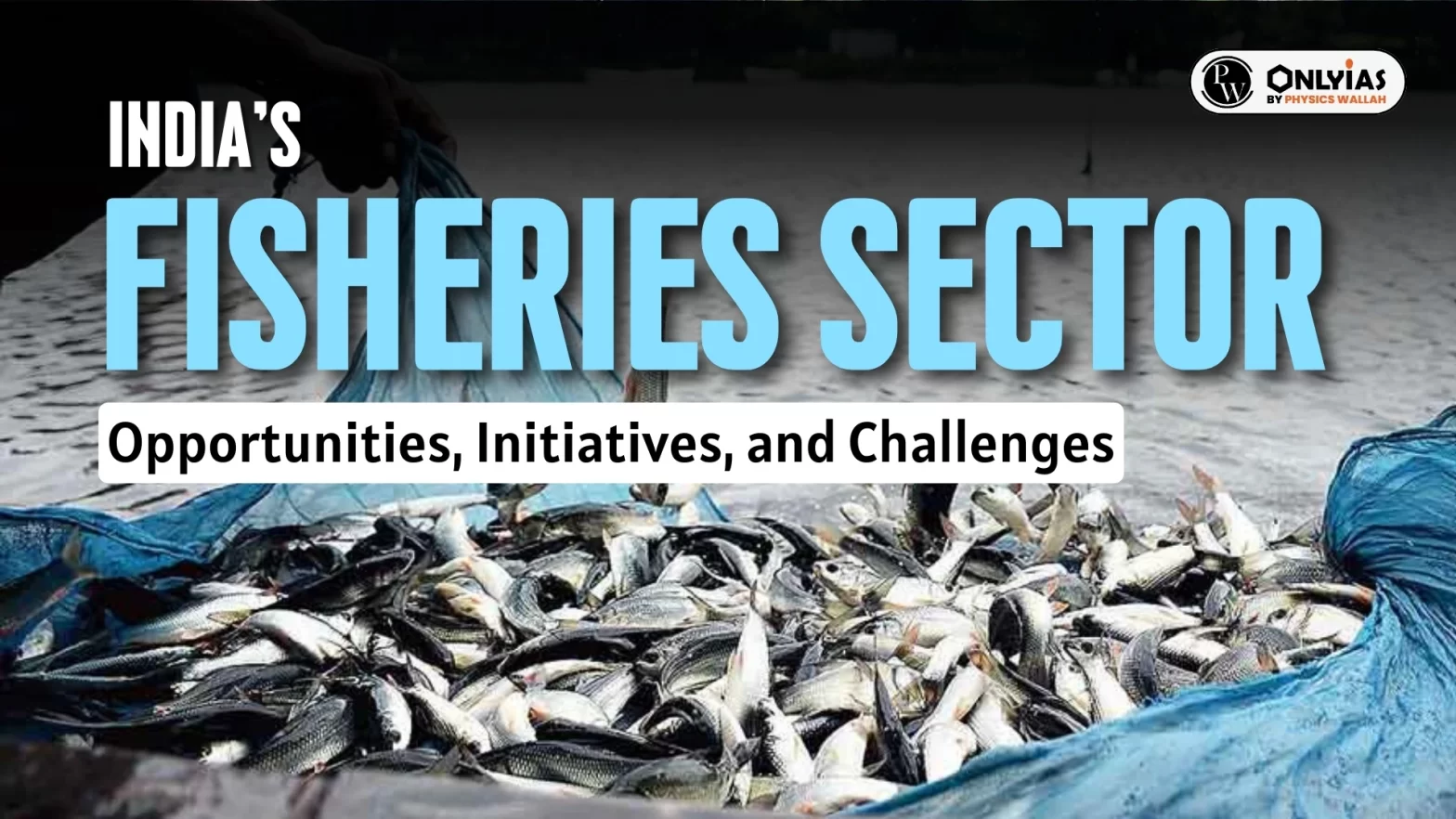Context: This editorial is based on the news “NITI Aayog hosted National Workshop on “Harnessing the Potential of Fisheries in Marine States” which was published in the PIB. NITI Aayog has recently hosted a National Workshop on “Harnessing Potential of Fisheries in the Marine States” in collaboration with the Government of Kerala and the Indian Council of Agricultural Research (ICAR) – Central Marine Fisheries Research Institute (CMFRI) in Kochi, Kerala.
| Relevancy for Prelims: NITI Aayog, Ocean Resources And Its Potential, National Fisheries Policy 2020, Marine States in India, Blue Economy, and Pradhan Mantri Matsya Sampada Scheme (PMMSY).
Relevancy for Mains: India’s Fisheries Sector- Potential, Challenges, Associated Government Initiatives and the Way Forward. |
About India’s Fisheries Sector
- India is the world’s second-largest aquaculture nation and the third-largest fish producer after China. The Indian Blue Revolution has led to a major improvement in the fishing and aquaculture industries.
- Marine Fisheries Resources of India are spread along the country’s vast coastline of over 8,000 km with 0.53 mn sq km of Continental Shelf and 2.02 mn sq km of Exclusive Economic Zone.
Potential of Marine States in India’s Fisheries Sector
- Improving Fishermen’s Income: The total fisheries potential of India has been estimated at 22.31 million metric tons, of this, the marine fisheries potential stands at an estimated 5.31 million metric tons, tapping this potential may help in doubling fishermen’s income by 2025.
- Boosting Seafood Exports: As a sunrise sector, it has a big impact on the Indian economy.
- Providing Employment Opportunities: Fisheries provides employment to more than 28 million people. Its growth and development could have huge further potential.
- Ensuring Nutritional Security: Fish is ‘nature’s superfood’ and an important source of proteins, healthy fats, omega-3 fatty acids, iodine, vitamin D, and calcium.
Challenges Associated with India’s Fisheries Sector in the Marine States
- Marine Fisheries Management: It faces several challenges in monitoring, control, surveillance, and knowledge gaps regarding the sustainability of key fish stocks.
- Infrastructure Gaps: Inadequate cold chain facilities can lead to post-harvest losses, etc.
- Climate Change and Extreme Weather Events: Due to climate change issues, changes in the ocean temperature, and the current rate of marine biodiversity loss due to exploitative fishing practices.
- Conflicts between India and Neighboring Countries: For violations of national jurisdiction while pursuing fish as they lack navigational devices to forewarn them of trespassing their jurisdiction.
- Vulnerability to External Shocks: External factors such as natural disasters or disease outbreaks can impact livelihoods.
- Deep Sea Trawling: It is infamous for catching huge numbers of fish as well as disrupting sea life, which also damages tourism.
- Illegal, Unreported, and Unregulated (IUU) Fishing: A non-traditional security concern that includes food and economic security, as well as broader societal and political issues.
- Other Challenges: Waste management, exploitation of middlemen, the drudgery of fisherwomen engaged in the processing sector, certification and traceability, etc.
Government Initiatives For India’s Fisheries Sector
- Marine Fisheries Management: Fisheries are state subjects under the Seventh Schedule of the Constitution of India. Fishing and fisheries beyond territorial waters are on the Union list.
- International Support: The World Bank approved USD 150 million in funding to support the recovery of India’s fisheries sector In 2020-21.
- Pradhan Mantri Matsya Sampada Scheme (PMMSY): To address significant productivity and production gaps in the fisheries sector, infuse innovation and cutting-edge technology, etc.
- National Fisheries Policy, 2020: To introduce a comprehensive and integrated ‘National Fisheries Policy, 2020’ by integrating the National Policy on Marine Fisheries, 2017 (NPMF), the Draft National Inland Fisheries and Aquaculture Policy (NIFAP) and the Draft National Mariculture Policy (NMP) along with the Elements of Post Harvest.
- Sagar Parikrama: It is a journey in the sea across the coastal belt demonstrating solidarity with all fish farmers and concerned stakeholders as a spirit of 75th Azadi Ka Amrit Mahotsav.
Continue To Read: National Scheme of Welfare of Fishermen, Eligibility, Benefits, Objective And More
Way Forward to India’s Fisheries Sector
- Encourage Sustainable Fishing Practices for the long-term health of marine ecosystems.
- Need to address Infrastructure Gaps by investing in developing cold chain facilities, upgrading landing centers, and improving fishing harbors.
- Need Climate Resilience for fisheries management planning in response to unpredicted environmental events.
- Time for Diversification and Value Addition in the fisheries sector by promoting activities such as ornamental fisheries, improved processing techniques, certification, and traceability.
- Promote Technology Adoption that can improve productivity, reduce environmental impact, and attract more youth to venture into the fisheries sector, etc.
- Providing Subsidies to Fishermen such as direct subsidies for the purchase of vessels, gear, engines, etc. and indirect subsidies through welfare schemes, construction of ports, etc.

